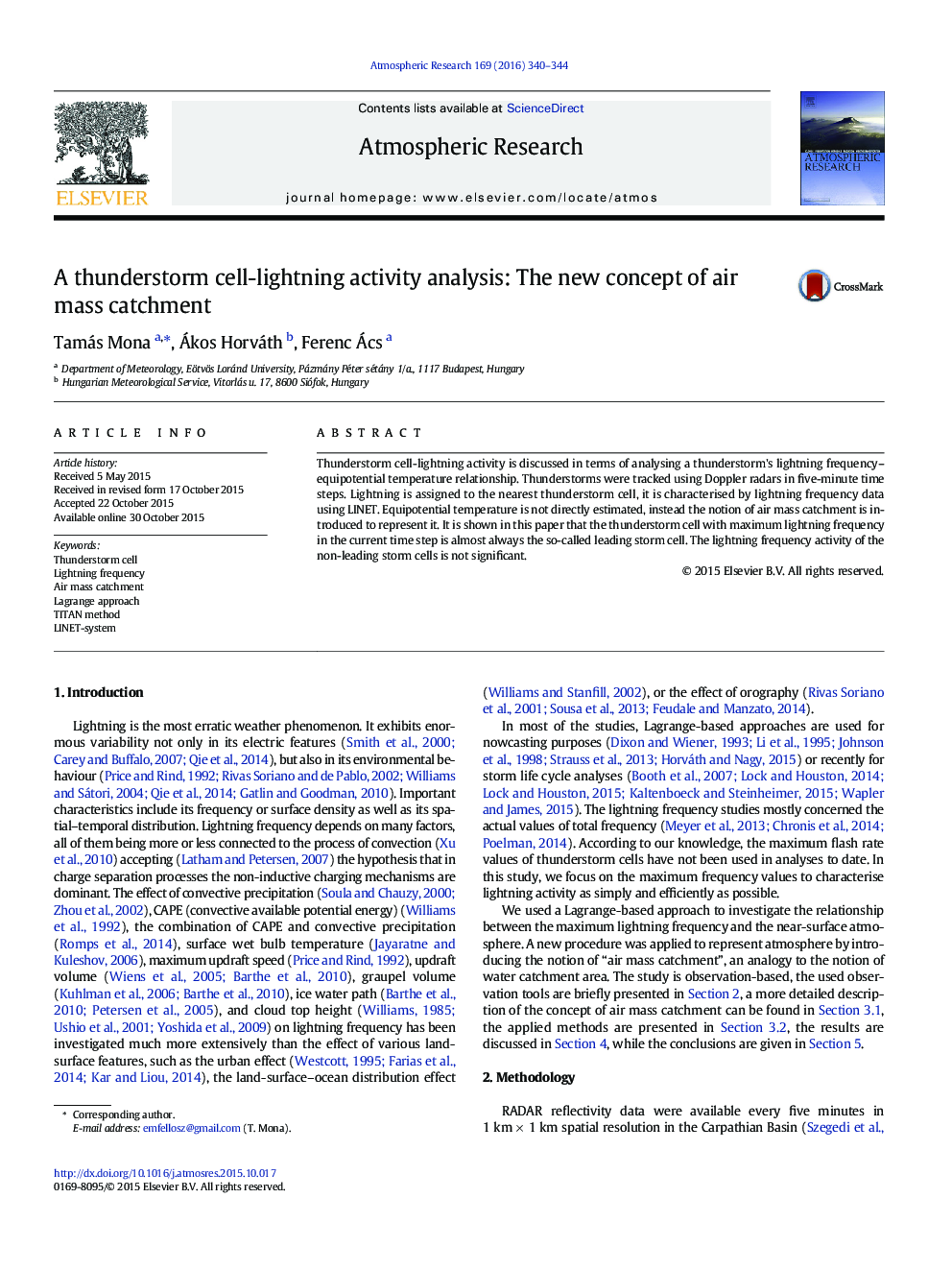| Article ID | Journal | Published Year | Pages | File Type |
|---|---|---|---|---|
| 4449712 | Atmospheric Research | 2016 | 5 Pages |
•We analysed the storm's lightning frequency–equipotential temperature relationship.•Storms were tracked using Doppler radars in five-minute time steps.•LINET lightning frequency data were used to assign the lightning to the nearest cell.•The consumed air by the cell is described by the concept of air mass catchment.•Leading storm cells are on-front-going storm cells in the air mass catchment.•Storm cells with maximum lightning frequency are almost always leading storm cells.
Thunderstorm cell-lightning activity is discussed in terms of analysing a thunderstorm's lightning frequency–equipotential temperature relationship. Thunderstorms were tracked using Doppler radars in five-minute time steps. Lightning is assigned to the nearest thunderstorm cell, it is characterised by lightning frequency data using LINET. Equipotential temperature is not directly estimated, instead the notion of air mass catchment is introduced to represent it. It is shown in this paper that the thunderstorm cell with maximum lightning frequency in the current time step is almost always the so-called leading storm cell. The lightning frequency activity of the non-leading storm cells is not significant.
